One common requirement is to compare profile data for objects that are aligned similarly but not parallel. Another is the ability to project objects from a plan view into a profile view. The abilities to superimpose profiles and project objects are both discussed in this section.
Superimposing Profiles
In a profile view, a profile is sometimes superimposed to show one profile adjacent to another (e.g., a ditch adjacent to a road centerline). In this brief exercise, you’ll superimpose one of your street designs onto the other to see how they compare over a certain portion of their length:
1. Open the SuperimposeProfiles.dwg file. This drawing has two profile views created, one with a layout profile.
2. Change to the Home tab and select Profile Create Superimposed Profile. Civil 3D will prompt you to select a source profile.
3. Zoom into the Syrah Way profile view and pick the cyan layout profile. Civil 3D will prompt you to select a destination profile view for display.
4. Pick the Parker Place profile view to display the Superimpose Profile Options dialog shown in Figure 7-57.
Figure 7-57: The Superimpose Profile Options dialog
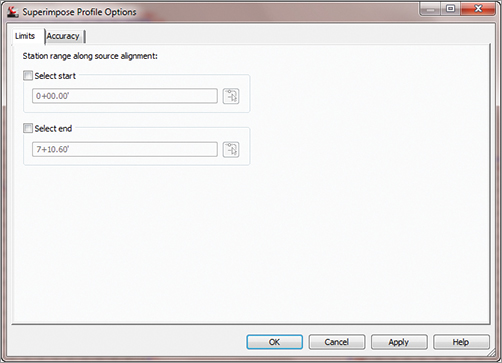
5. Click OK to dismiss the dialog, accepting the default settings.
6. Zoom in on the right side of the Frontenac Drive profile view to see the superimposed data, as shown in Figure 7-58.
Figure 7-58: The Syrah Way layout profile superimposed on the Frontenac Drive profile view
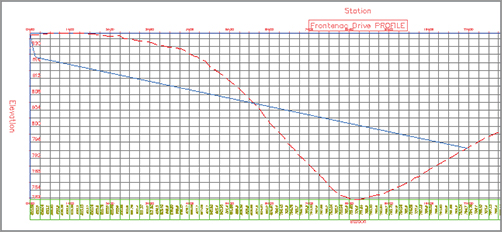
Note that the vertical curve in the Syrah Way layout profile has been approximated on the Frontenac Drive profile view, using a series of PVIs. Superimposing works by projecting a line from the target alignment (Frontenac Drive) to an intersection with the other source alignment (Syrah Way).
The target alignment is queried for an elevation at the intersecting station and a PVI is added to the superimposed profile. Note that this superimposed profile is still dynamic! A change in the Syrah Way layout profile will be reflected on the Frontenac Drive profile view.
Object Projection
Some AutoCAD and some AutoCAD Civil 3D objects can be projected from a plan view into a profile view. The list of available AutoCAD objects includes points, blocks, 3D solids, and 3D polylines. The list of available AutoCAD Civil 3D objects includes COGO points, feature lines, and survey figures. In the following exercise, you’ll project a 3D object into a profile view:
1. Open the ObjectProjection.dwg file.
2. Change to the Home tab and select Profile View Project Objects To Profile View from the Profile & Section Views panel. Select the Fire Hydrant object located in the center of the circle and press ↵. Civil 3D will prompt you to select a profile view.
3. On the Syrah Way profile, select a grid line. The Project Objects To Profile View dialog opens.
4. Select the EG Elevation Option and verify that the other options match those in Figure 7-59. Click OK to dismiss the dialog, and review your results as shown in Figure 7-60.
Figure 7-59: A completed Project Objects To Profile View dialog
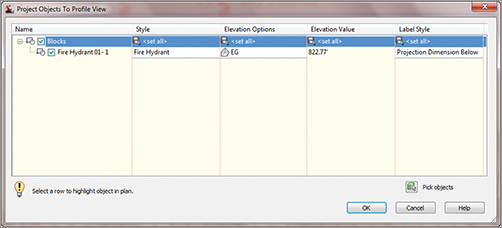
Figure 7-60: The COGO point object projected into a profile view
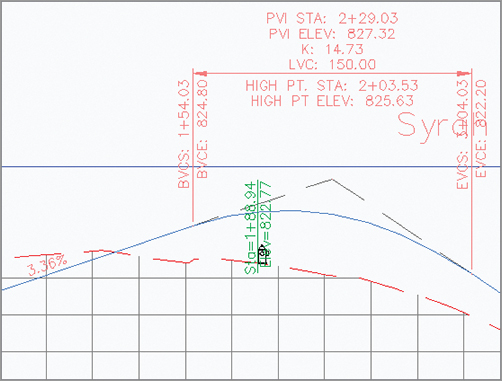
We actually wanted the Fire Hydrant to show on the Proposed surface. No problem. Follow these steps:
1. Click on the Fire Hydrant in profile view.
2. Right-click and select Projection Object Properties. The Projection View Properties dialog opens.
3. In the Projection View Properties dialog, click the <set all> area by the Elevation Options and select Syrah Way FG, as shown in Figure 7-61. Click OK.
Figure 7-61: Select the Syrah Way FG elevation.
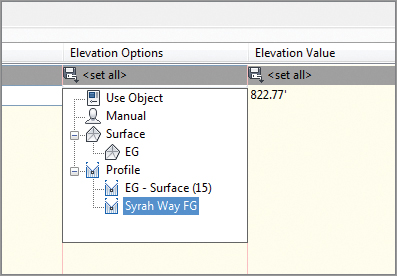
4. The Fire Hydrant is now reprojected to the Syrah Way Finished Grade (FG), as shown in Figure 7-62.
Figure 7-62: The Fire Hydrant reprojected onto the Syrah Way FG
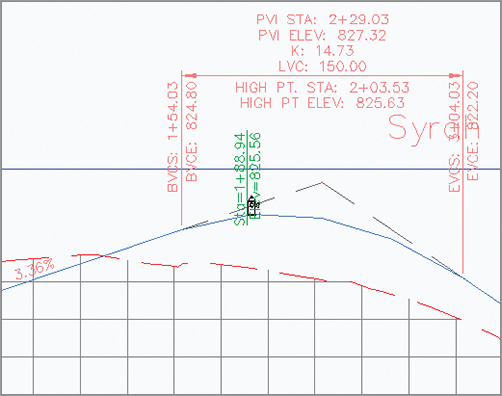
Once an object has been projected into a profile view, the Profile View Properties dialog will display a new Projections tab. Projected objects will remain dynamically linked with respect to their plan placement. Because profile views and section views are similar in nature, objects can be projected into section views in the same fashion.
